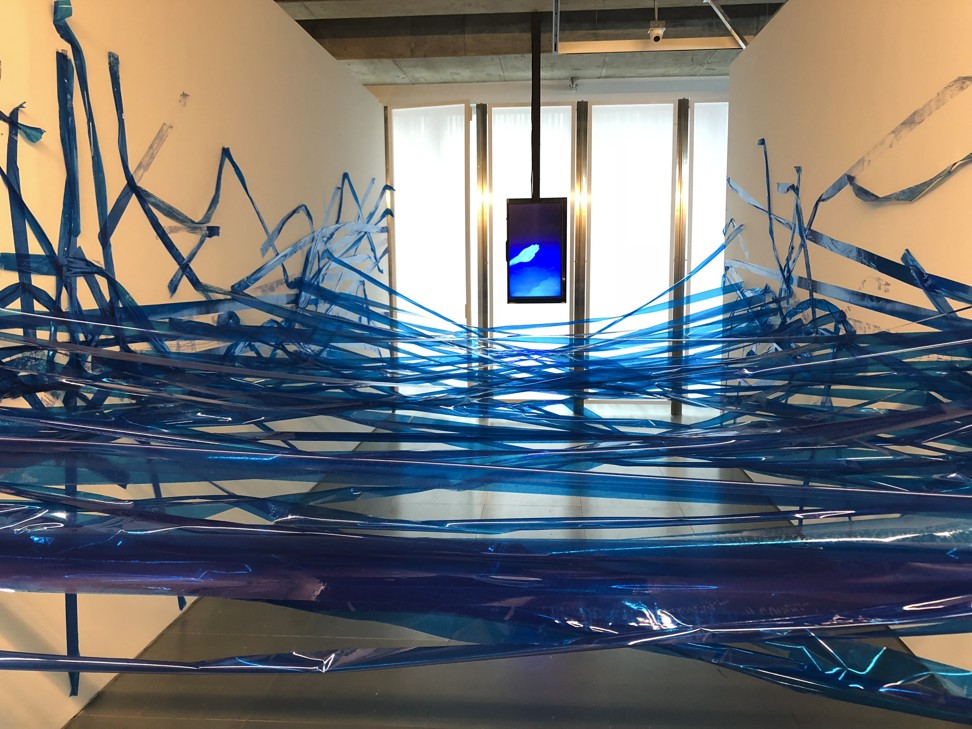
How Kwan Sheung-chi’s new Hong Kong exhibition cleverly cajoles you out of political complacency
With ‘Blue is the New Black’, Hong Kong conceptual artist has put together a meticulously arranged exhibition of videos and installations that challenge our easy acceptance of political and social frameworks
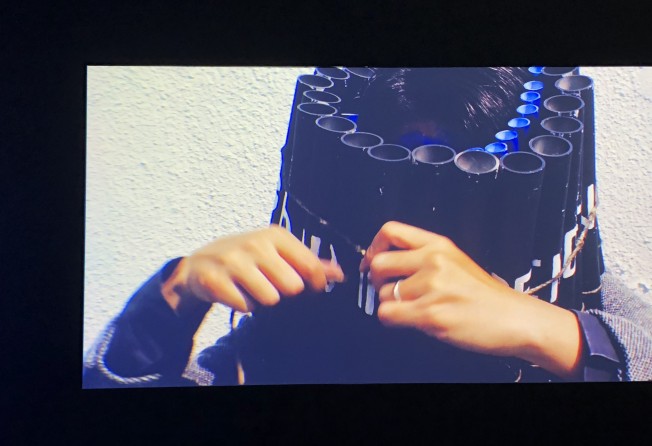
The title of Kwan Sheung-chi’s new exhibition, “Blue is the New Black”, is adapted from Blue and Black, a well-known 1950s Chinese novel in which the two colours symbolise the good and bad things that happened to the protagonist during the second world war. But Kwan’s show is for today’s world, one in which geopolitical power is drastically shifting and it is not so easy to tell the good and the bad apart.
The physical demands that Kwan imposes on visitors might almost leave them black and blue. The entryway to the Edouard Malingue Gallery in Central is obstructed by a sea of criss-crossing blue tape that stretches between the two walls a metre off the ground. To get in, you have to crawl on your knees or waddle with your head down under the tape, which closely resembles a police security cordon. It is the same on the way out.
On first look, this radical entry might arouse the thrill of transgression. But stooping beneath the tape, one feels coerced and put upon – Kwan’s cruel way of making people pay obeisance to his art while forcing visitors to be active participants.

This sets the tone for an exhibition that cleverly cajoles you out of complacent acceptance of social and political frameworks, and the dialectical oppositions that engulf Hong Kong and other parts of the world today. (There is an alternative entrance for those unable – or unwilling – to use the main one, though that, unfortunately, is not wheelchair accessible.)
Videos and installations make up the body of the exhibition. A blue sky with white clouds is used throughout as a visual trope in reference to René Magritte’s surrealist paintings. This is not just a comment about the instability of meanings and symbols – it also helps one of the exhibition’s most impressive works, Before the End: Pierrot le Fou (1965), get away with its themes of violence and suicide without coming across as crass.
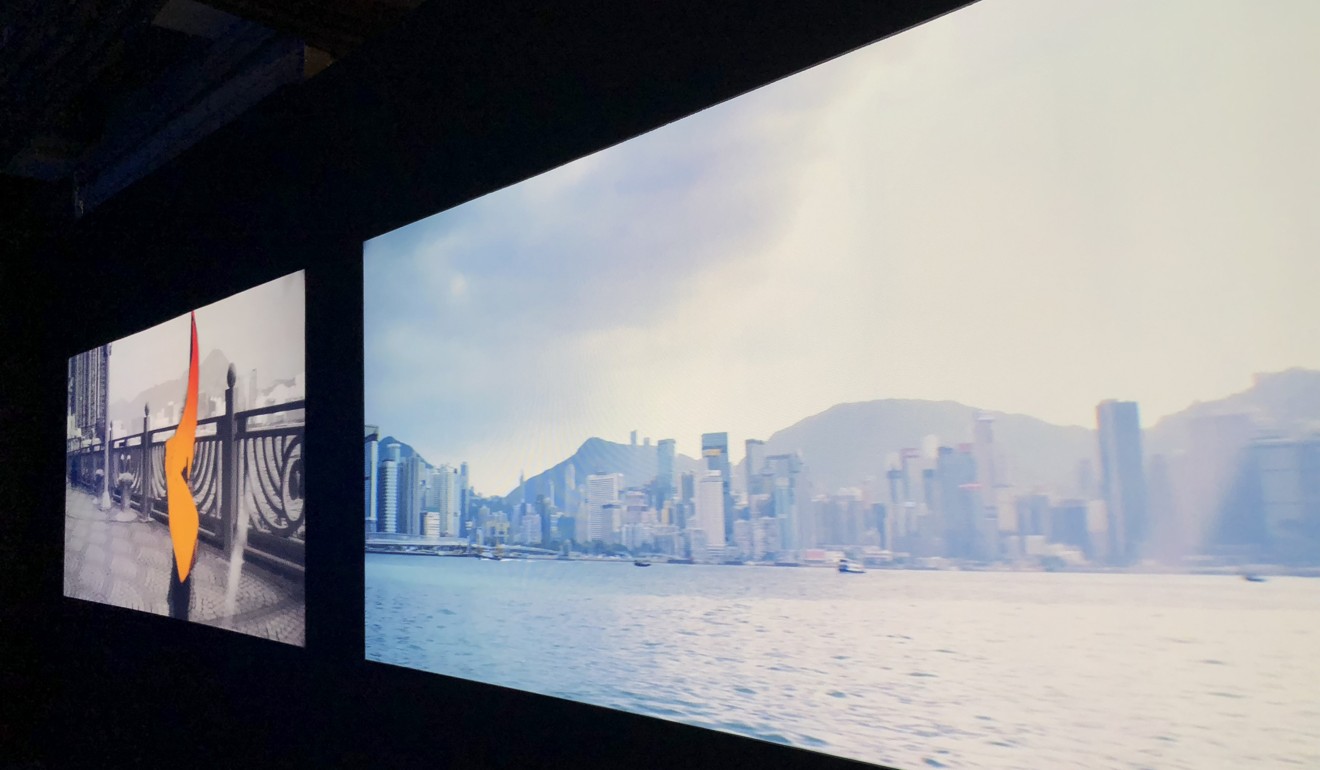
This video work is based on the 1965 film Pierrot le Fou by Jean-Luc Godard about a man desperate to escape his bourgeois life. He has a wild time breaking rules and taboo before accidentally blowing himself up. In Kwan’s version, the artist is seen breaking into a private rooftop before painting his face blue – adding Magritte’s fluffy white clouds for a surrealist touch – and wrapping rolls of dynamite around his head, as Pierrot does in the film.
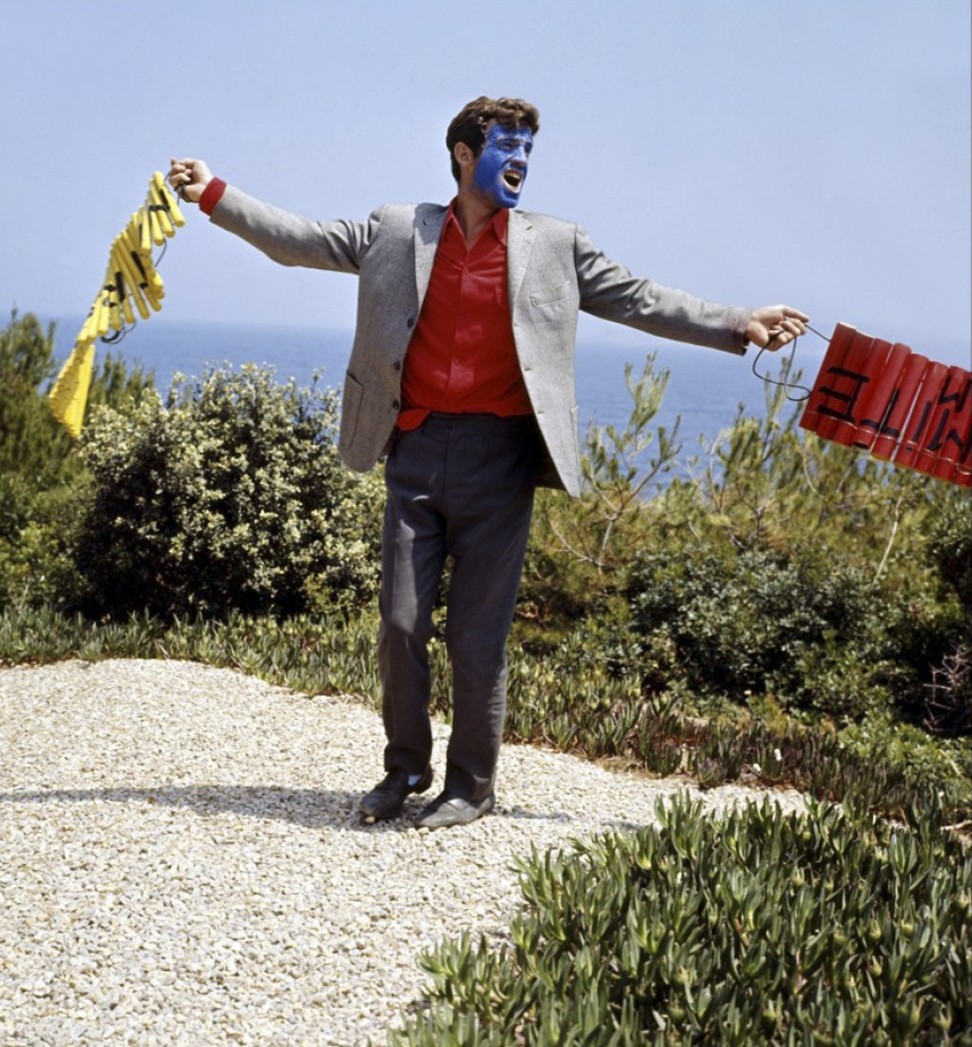
Kwan’s dynamite is covered in inflammatory political phrases. “Hong Kong independence” reads one; another has a half-hidden message beginning “Hong Kong is not” that is bound to make those familiar with the city’s politics think of the localists’ slogan “Hong Kong is not part of China”.
Then he sets the fuse alight. In the 1965 film, Pierrot changes his mind but is too late to do anything about it. Here, too, a huge explosion ensues. As the smoke dissipates, Victoria Harbour appears.
It is left up to viewers to decide whether this act of self-destruction would leave the city in mourning, or whether it would be unmoved, untouched and possibly even unaware anything had happened. It is a courageous piece of art at a time when political and religious martyrdom is such a sensitive subject.
In another video, Before the End: Les Quatre Cents Coups (1959), Kwan’s four-year-old son re-enacts the last few minutes of French director Francois Truffaut’s film Les Quatre Cents Coups, accompanied by the haunting soundtrack from the original.
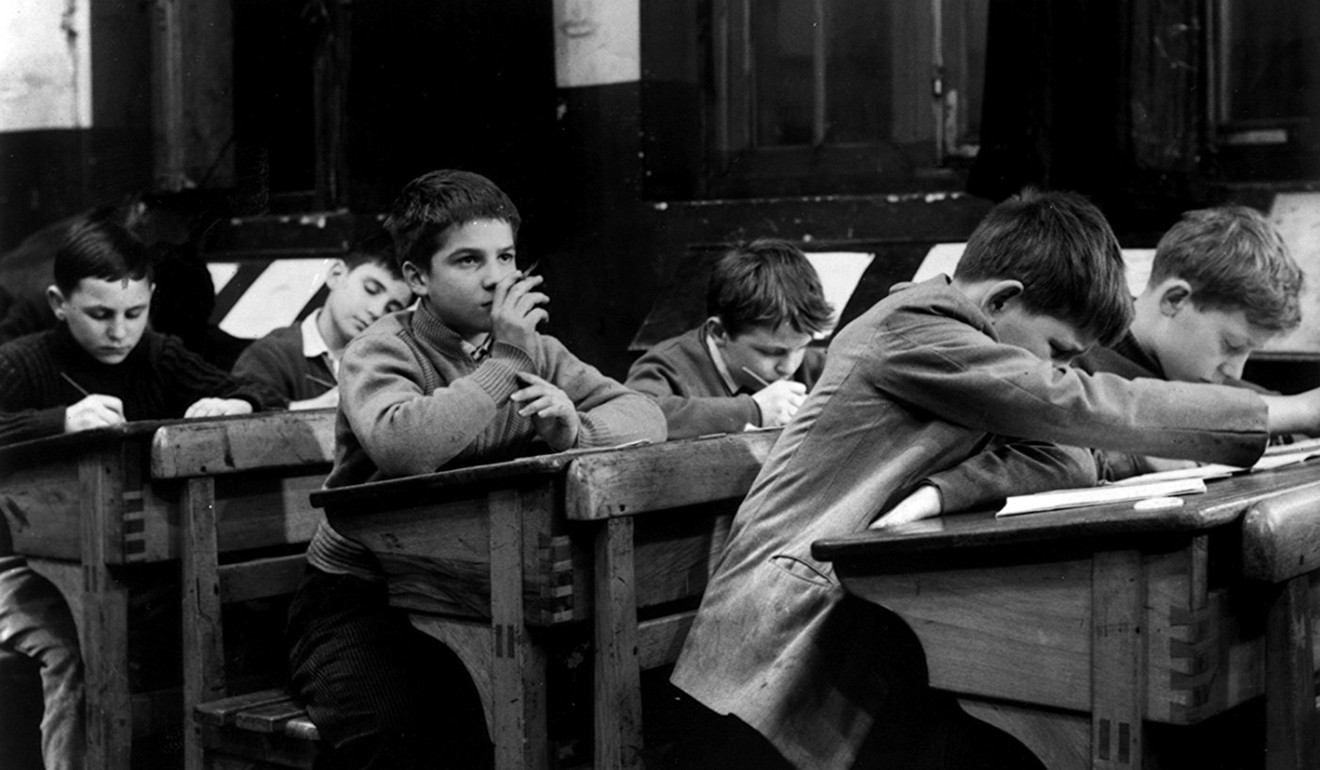
In Truffaut’s version, the liberating finale shows the film’s young protagonist running all the way from a juvenile detention camp to the sea, an escape from a life ruled over by authorities.
In Kwan’s, his son is seen running along the Hung Hom waterfront without a care in the world. But a plain red flag in his hand – the only colour in an otherwise black and white video – injects the complexity of identity politics into an otherwise innocent scene. Is it a Chinese flag? Or is it a reference to the French flag in Eugène Delacroix’s 1830 painting Liberty Leading the People?
The same ambiguity plays out in a pair of videos that hang just past the sea of blue tape. One shows a hand robotically saluting against a blue Magritte sky. In the other, plaster models of Michelangelo’s David are mercilessly smashed up against a black background.
This could be about the Cultural Revolution and its mindless destruction of the old and unthinking acceptance of the new. Or it could be about the inescapability of constant change – after all, on display in another room are building blocks made from the shattered Davids.
The exhibition’s largest work is Above U (2017), a blue, room-sized raised platform that leads to the rest of the exhibits. As you walk along it, carefully studying a message in neon lights overhead, you realise that by the time you work out what it says, a surveillance camera on the ceiling has had ample time to record your face.
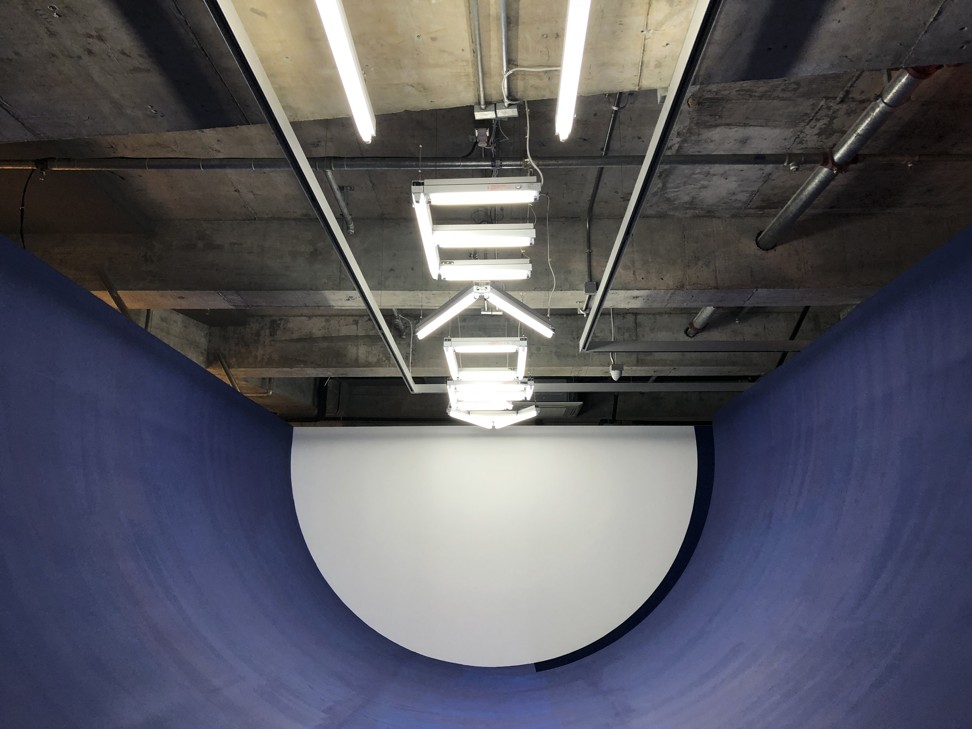
In the next room, the watched becomes the watcher as monitors show subsequent visitors passing along the same platform looking up just as curiously. But this is probably the least powerful of the works here: authenticity, voyeurism and privacy are all potent issues in this age of obsessive social media use, but have become a little too trendy in artists’ work.
This meticulously arranged exhibition by one of Hong Kong’s most consistent, thoughtful and provocative artists is ultimately a rewarding one. It is definitely worth getting down on your hands and knees for.
Kwan Sheung-chi: Blue is the New Black, Edouard Malingue Gallery, 6/F 33 Des Voeux Road Central, Mon-Sat 10am-7pm. Until Nov 30.